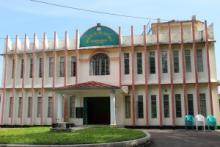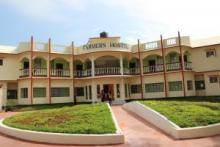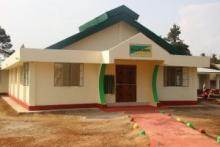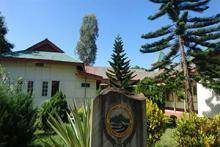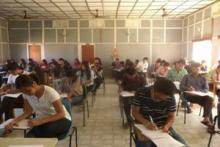HISTORY
The most famous Agriculture Extension Project “Jamuna Par Punar” (recruitment of village-level workers) was introduced into the extension system for the first time in India in the year 1948 – 49 by Dr A. T. Mosher. Based on this project the first planners of our country took the idea of the “village level worker” as a community development model. This has been adopted by eleven countries of the world.
It was in 1962-63 when the Accountant General of Assam and Nagaland was functioning from Shillong, Meghalaya that the Government granted the Integrated Extension Training Centre (I.E.T.C.)at Ghaspani presently known as Medziphema located between Dimapur and Kohima, Nagaland. But since the training centre did not have adequate facilities especially buildings, the regular session could not be started immediately. The major academic expansion took place during 1964 – 65 with the establishment of the training centre and the first phase the development of appropriate training courses and training programmes under the first Principal of I.E.T.C Principal J. Kire,
Presently integrated extension training centre is involved in teaching and extension, to impart quality teaching and extension modules for the multi-dimensional development of the trainees, field workers, extension workers, officers and farming communities in and around Nagaland.
The principal of I.E.T.C and Director SAMETI:
In the year 2011, on 5th August, the Integrated Extension Training Centre was upgraded to SAMETI. Erstwhile, the state-level training of the department was organized and held by this training centre along with the two years certificate course. However, with the up-gradation to SAMETI, the workload has been lifted. Thus, the nomenclature of Principal I.E.T.C. Medziphema is now changed to Principal I.E.T.C and Director SAMETI, empowered for administration and function of both I.E.T.C and SAMETI.
Faculty of I.E.T.C
The mission of the faculty of I.E.T.C is to equip trainees with requisite attitude, knowledge and skills in the unique context of agricultural enterprises, including entrepreneurial ventures. The faculty consists of a Sr. lecturer, five junior lecturers, of whom, two has been assigned as In- Charge of Biocontrol laboratory and Biofertilizer laboratory respectively. Each semester the training covers seven subjects on the following discipline. Agronomy, Horticulture, Animal husbandry, extension education, Plant protection, Agril.economics and entrepreneurship.
Future plan of the department: The department has been offering 2 years certificate course till date however with vast increase scope in field of Agriculture the department will be upgrading this course to 2-year diploma course.
UNDER IETC THERE ARE THREE LABORATORIES
1. AGRICULTURE CHEMISTRY LABORATORY, A BRIEF ACCOUNT
2. State Bio- Control Laboratory, Medziphema
3. Biofertilizer Laboratory, Medziphema
The number of trainees batch-wise :
| Batch | No. Of trainees | Year |
| 25 | 1966-68 | |
| 24 | 1966-68 | |
| 20 | 1968-70 | |
| 24 | 1969-71 | |
| 16 | 1970-72 | |
| 18 | 1971-73 | |
| 30 | 1972-74 | |
| 24 | 1973-75 | |
| 23 | 1974-76 | |
| 46 | 1975-77 | |
| 35 | 1976-78 | |
| 34 | 1977-79 | |
| 39 | 1979-81 | |
| 35 | 1981-83 | |
| 23 | 1983-85 | |
| 67 | 1985-87 | |
| 26 | 1987-89 | |
| 30 (crash course) | 1990-91 | |
| 27 | 1997-99 | |
| 27 (crash course) | 2000-01 | |
| 26 | 2005-07 | |
| 33 | 2007-09 | |
| 45 | 2009-11 | |
| 52 | 2011-13 | |
| 65 | 2014-16 |
